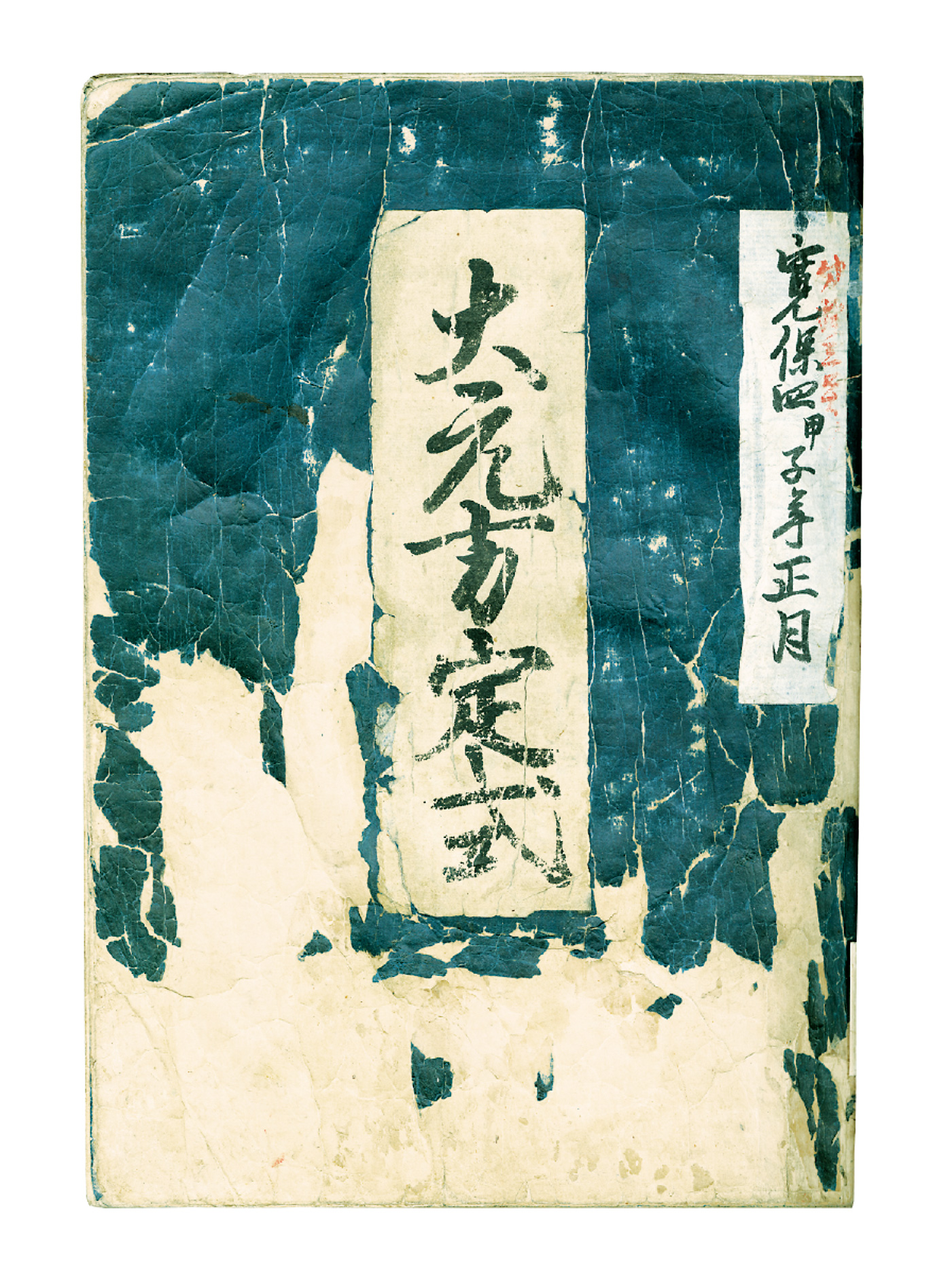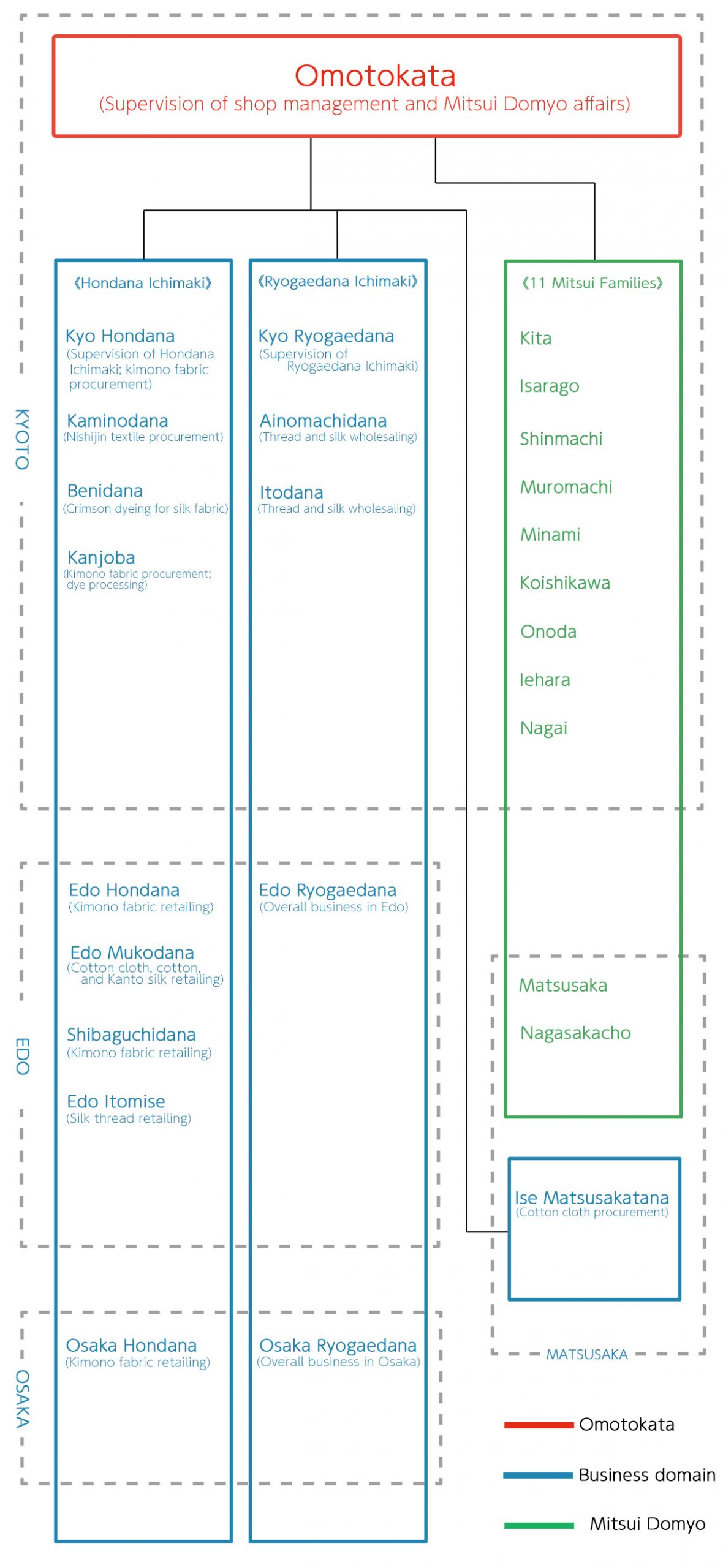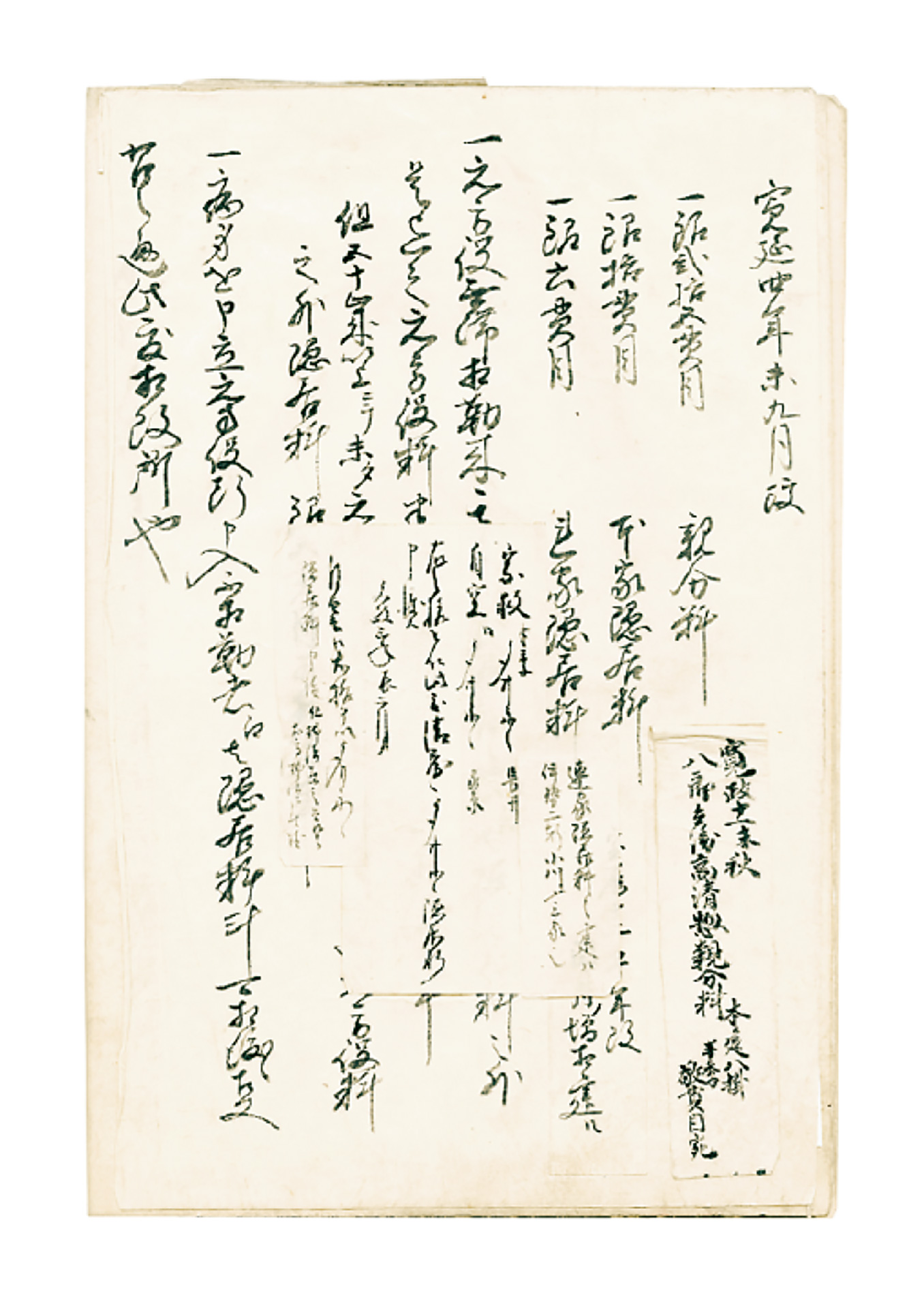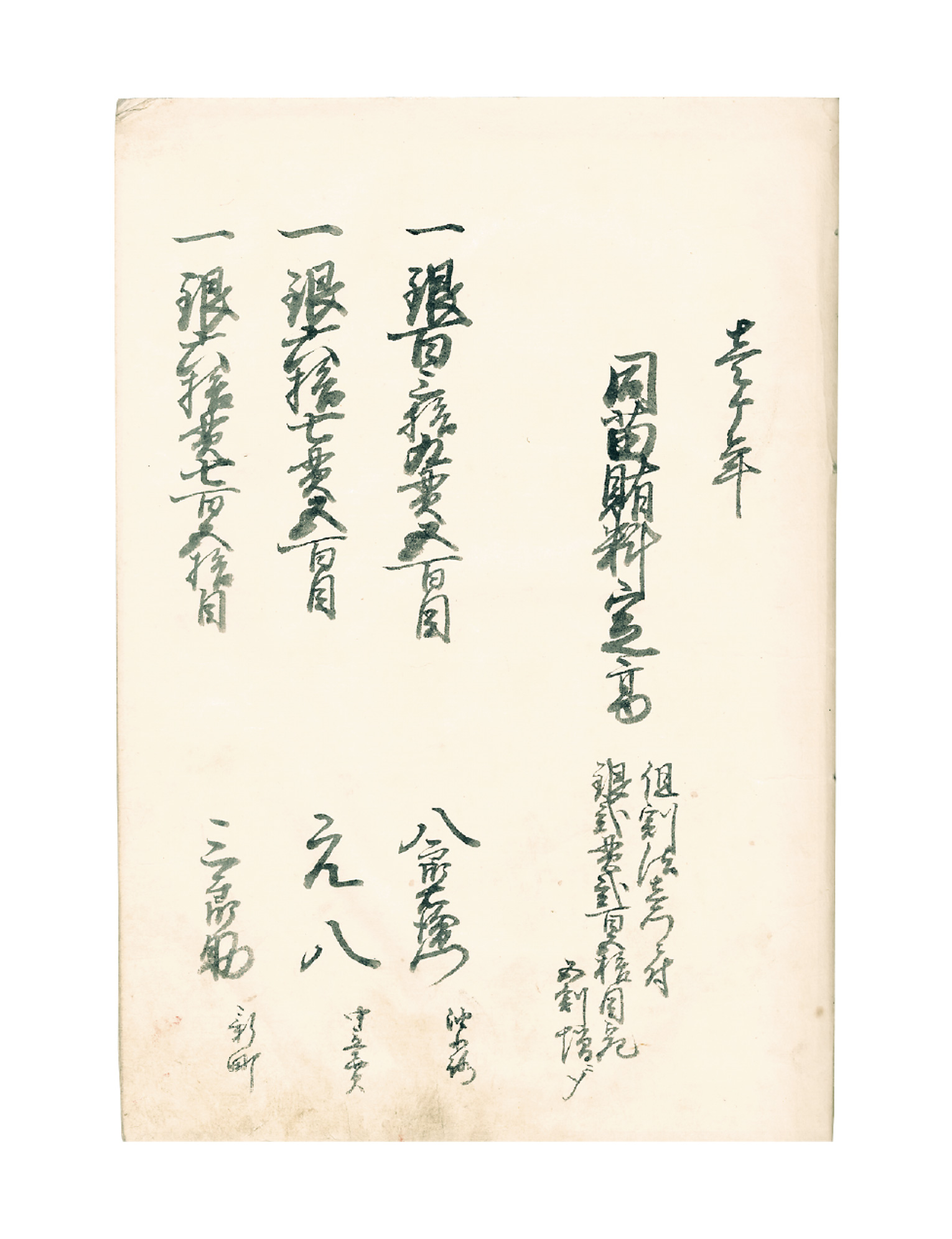10 The Omotokata (1): Overseeing Mitsui Shops and Family Matters

About the Omotokata
Mitsui had two business divisions, the kimono division (Hondana Ichimaki) and the financial division (Ryogaedana Ichimaki). The Mitsui Domyo consisted of six main families and five associate families (→06). In principle, the business divisions were held in common by all 11 families (Shinjo Itchi). With multiple families sharing assets and the management of two commercial domains, unified oversight of business and the Mitsui Domyo was required. The Omotokata was the administrative entity established in Kyoto to accomplish this aim.
The Omotokata met twice a month. At this gathering of family members and senior managers (Motokatagakari), a wide range of issues was discussed and decided.
Relationship with Shops
The Omotokata exercised total control over allocations of capital to the kimono and financial divisions. It made operating capital available to each and charged interest on loans based on specified interest rates. Every three years a comprehensive settlement was made, with ten percent of total profits allocated to employees as bonuses. The remaining profits were, as a rule, remitted to the Omotokata (→11).
Omotokata meetings dealt largely with matters pertaining to employees and shops. Employee matters included appointments to senior positions, retirement and succession requests, and loan requests from branch families (→19,20). For the shops, discussions included formulation and revision of rules, lending and borrowing in gold and silver by each shop, and remittance of profits.
Relationship with the Mitsui Domyo
The Mitsui Domyo was also regulated by the Omotokata. The 11 families adhered to the rules of the Sochiku Isho (→09), and their proportionate claim to overall family wealth was defined. As noted at the outset, the families received allowances to cover living expenses, along with retirement allowances, necessary expenses for children, funds for construction and upkeep of residences, wedding costs, travel expenses, etc. Decisions relating to these payments, retirement requests, and other matters were taken at meetings of the Omotokata.
The Anei Partition
While it was a Mitsui rule that the families shared capital and the business divisions, in one instance this principle was abandoned. In 1774, due to poor business performance by the divisions, increases in impaired assets, accumulated family debts, and discord among the families, it was decided to treat the kimono division, the financial division, and the Matsusaka Shop as independent business lines. The families were also divided into three groups, each having control over one business line. This reorganization was known as the Anei Partition, after the then-current era name. While the partition was in effect, the Omotokata and the Mitsui Domyo ceased to exercise their overall coordination functions. Twenty-four years later, in the Kansei Unification of 1797, Mitsui became a single entity again, but the former accounting system was not completely restored, leaving the kimono and financial divisions more mutually independent than before.
The Omotokata Joshiki specified everything from family living expenses and expenses for construction and upkeep of residences, to compensation and retirement payments for senior managers. The rules were formulated in 1722 and revised in 1744. This document is the 1744 version. Judging from the condition of the cover, it was frequently consulted. There were also frequent revisions, recorded on slips of paper pasted into the volume (right photo). Allowance amounts and categories were changed to reflect actual conditions, such as business fluctuations, and the rules were clearly applied with repeated partial revisions.
Omotokata Joshiki (financial protocols)
Description
Living expenses for the Mitsui Domyo were calculated based on their distribution share as stated in the Sochiku Isho (→09). For example, the document above states that Takaharu, the fourth-generation head of the Kita family, residing in Kyoto Aburakoji, is to be allocated 139 kan of silver; Takakatsu, the second-generation head of the Isarago family, residing in Kyoto Nakadachiuri, is to be allocated 67 kan of silver; and Takahisa, the third-generation head of the Shinmachi family, residing in Kyoto Shinmachi, is to be allocated 60 kan of silver. The Omotokata was the entity responsible for administering the living expenses allocated to each family.




